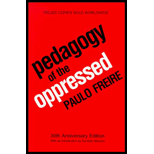Yesterday morning, I was listening to a somewhat local classic rock station – something that I rarely do for many reasons. The number one reason is that morning radio is always terrible. It’s a black hole of sad, tasteless, humorless talk (though they think they’re funny…) mixed with music that is at least 15 or so years old and was on the top 40 charts (which doesn’t mean it’s good! I’ll get back to this one later.). I realized some things while suffering through this ordeal.
First of all, the DJs are total idiots. They relayed a news story about a man with “dark, pock-marked skin” who robbed the CVS pharmacy of prescription painkillers at gunpoint. A story about a broken man who, when caught, will spend time in jail paying for his crime instead of being healed of the affliction that would cause a person to commit the crime. The DJs, who are both white, proceeded to use the story to be funny… They failed. The two turned on their best caricature voices of black gangsters and with the remarkably unfunny radio play that followed they accomplished two things. First, they made me want to destroy my radio. Second, they perpetrated a negative stereotype that erroneously places black culture beneath white culture. Granted, they are so stupid, they could never understand that, and if you ever called them racist, I imagine they would argue that you were just overreacting, they’re complete idiots…
The fact remains that in our society, there is rampant oppression, and episodes like this only serve to strengthen it while downplaying its importance. I don’t believe, however, that it’s only people of color, people of different religions, women, or the LGBT community that are oppressed. Though that is just about everyone (!), I think it’s a little bigger than that, and without realizing it, the white men on the radio are also oppressed. Because they enjoy more benefits from the system of oppression itself, they allow themselves to be used as tools to carry out this oppression.
 Our schools are part of the problem. The system we have in place right now perpetrates the same oppression and racism. We need a critical pedagogy to address the oppression directly, not just for those of us who are oppressed, but also for the perceived oppressor. As an oppressed class, the “oppressor” needs to be freed as well or the seeds of oppression won’t die.
Our schools are part of the problem. The system we have in place right now perpetrates the same oppression and racism. We need a critical pedagogy to address the oppression directly, not just for those of us who are oppressed, but also for the perceived oppressor. As an oppressed class, the “oppressor” needs to be freed as well or the seeds of oppression won’t die.
To learn more about critical pedagogy, Paulo Freire is a great place to start. His book, Pedagogy of the Oppressed is a brilliant work which “attempts to help students question and challenge domination, and the beliefs and practices that dominate.”
Tag Archives: classic rock
The 10 Most Used Chord Progressions in Pop and Rock and Roll
The following is a list of ten of the most used chord progressions in music today. Some  are classic and have been used hundreds of times sometimes in combination with each other or with slight alteration to make things a bit more interesting. If you learn these progressions and are able to pick them out of a song by ear, you should be able to play (or at least understand) nearly any song! To make it a little easier to play in any key, I made this PDF that lists all the chords you’ll need in all keys! I’ll be putting more resources including scales for guitar and bass, arrangements, chord charts, etc. here.
are classic and have been used hundreds of times sometimes in combination with each other or with slight alteration to make things a bit more interesting. If you learn these progressions and are able to pick them out of a song by ear, you should be able to play (or at least understand) nearly any song! To make it a little easier to play in any key, I made this PDF that lists all the chords you’ll need in all keys! I’ll be putting more resources including scales for guitar and bass, arrangements, chord charts, etc. here.
If you’re a songwriter, knowing these progressions will help you avoid writing the same song multiple times or copying your heroes’ music. These chord progressions are the musical archetypes.
For those of you that know music theory, I’m providing the roman numerals. For those of you that don’t, I’ll give you the progressions in the key of G in parenthesis.
Number one is the Don’t Stop Believing Progression, I – V – vi – IV (G – D – Em – C). The Axis of Awesome did a great bit about this one in which they play 40 songs in a row that all have the same progression including, No Woman No Cry, Let It Be, I’m Yours, etc… and over the past few years, that list has become a lot longer!
The second is the 50’s Progression, I – vi – IV – V (G – Em – C – D). I call it this because it was hugely popular in the 50’s and 60’s and is still used today. Notably used recently by Justin Bieber for “Baby” (Justin was like baby baby baby oh… what a pity) and Sean Kingston for “Beautiful Girls,” though Kingston really just ripped Ben E. King’s “Stand By Me” off.
The third is the Canon, I – V – vi – iii – IV – I – IV – V (G – D – Em – Bm – C – G – C – D). It was the chord progression used by Pachelbel for his Canon in D (not G as above). The piece, forgotten soon after it was written (around 1694), was rediscovered in the early 20th century and has influenced a number of songwriters. It is, however, simply an extension of the basic I – IV – V – I progression that was used by nearly every composer for hundreds of years up to about 100 years ago.
The fourth is the Blues Progression, I – I – I – I – IV – IV – I – I – V – V – I – I (G – G – G – G – C – C – G – G – D – D – G – G). This is the way Chuck Berry played it in Johnny B Goode though the last 4 chords are often V – VI – I – V (D – C – G – D). There are 12 chords because it follows the standard 12-bar blues progression. In this progression it’s common to switch freely between major and minor. This progression has been used in thousands of songs outside of the blues from Cream’s Sunshine Of Your Love to Tracy Chapman’s Give Me One Reason and beyond.
The fifth is the Smoke on the Water Progression, ii – IV – V (am – C – D). It’s usually used as part of a larger progression and was used in Purple Haze, Iron Man, House of the Rising Sun, Stepping Stone, etc…
The sixth is the Good Love Progression, I – IV – V – IV (G – C – D – C). This was used in Wild Thing, La Bamba, and Good Love, etc.
 The Seventh is the Sweet Home Progression… (god, how I hate Sweet Home Alabama!) V – IV – I (D – C – G). Can’t Explain, Sweet Child of Mine.
The Seventh is the Sweet Home Progression… (god, how I hate Sweet Home Alabama!) V – IV – I (D – C – G). Can’t Explain, Sweet Child of Mine.
The Eighth is a rearrangement of the Don’t Stop Believing progression vi – IV – I – V (em – C – G – D). I’m not sure what to call this one. The song that always gets stuck in my head with this one is The Red Hot Chili Pepper’s Snow, though I know Taylor Swift uses it in at least three songs (as well as most of the other progressions above…), Green Day used it in Holiday, and The Cranberries used it in Zombie, just to name a few.
The ninth is the stereotypical Descending Flamenco Progression vi – V – IV – III (em – D – C – B (not Bm!)). This one has been used in songs from California Dreamin to Stray Cat Strut… I’m sure you can think of a few more! A variation on this is vi – V – VI – V (em – D – C – D) which arguably may be more popular today…
And the tenth that I see is the As My Guitar Gently Weeps Progression. This one straddles two keys and it’s basic representation is ii – I – V6 – bVII (- VI) (am – G – D/f# – F (- E)). It looks like a variation on the Descending Flamenco Progression and is presented with slight variations by everyone that uses it. The Beatles actually substituted an am7/G for the G chord and left out the E. Chicago, in 25 or 6 to 4 focused on the root notes in the bass -> A – G – F# – F – E. Led Zepplin, Green Day, and Neil Young all offered their variations as well.
These progressions are not the end of music. They’re used a lot but they’re not your only options! If you look on the ultimate guitar archive you’ll see them everywhere, but most songwriters use them in combination with other progressions or with variation, creating something new using old building blocks. Please don’t think of this list as a set of rules! Just information to enhance your own understanding of the way music works.
Check out my teaching website at Thorne’s Guitar




